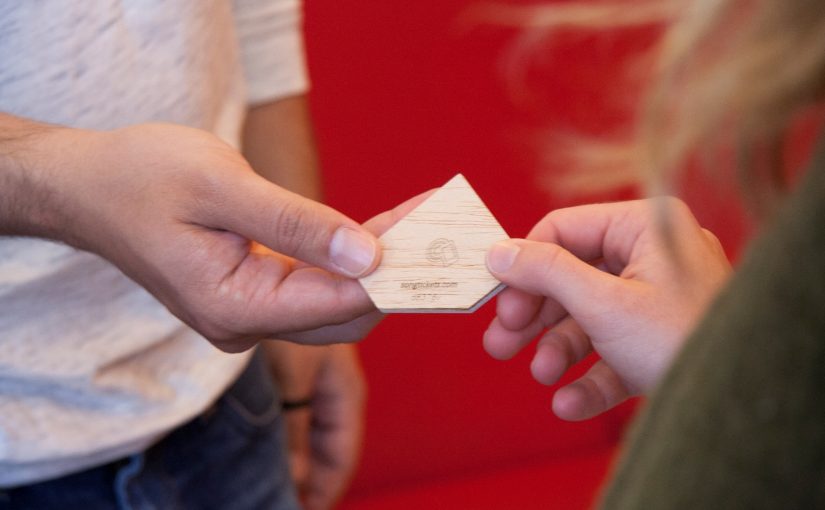This research was conducted as part of my graduation project the MSc Industrial Design (2013-2014).
Music has been around for ages and has always played an important role in human culture and society. Nowadays, with the coming of cloud computing and ubiquitous, smart, mobile and personal devices, the way we deal with music in everyday life has changed completely. Music streaming services allow us to access any song, anywhere, at any time. In the past people gave each other CDs or mixtapes, but somehow sharing music in the digital world no longer feels as special as sharing it physically.
I believe the sharing experience of music can be enriched and therefore become more meaningful. Apart from the loss of the tangible qualities of streaming music, there are new opportunities for this medium as well. The fact that virtually all music in the world is so easily accessible opens up opportunities for innovation in the music business.
I investigated how a physical instances of digital music can enhance the gift-giving experience. I designed two probes that were passed on between friends to give music to each other.

Musicube
The Musicube is a simple music object that is passed on between people. The person receiving the cube as a gift can keep it for a while and is than prompted to give it to someone else. The wooden cube contains a modified USB drive that can be connected to a computer. The cube can be positioned on a desk or a prominent place to display and stands out from its environment. It’s painted white to evoke personalisation of the object (marker of identity) and made heavier with a small body of steel to add to its significance. The cube contains two playlists:

Musicards
The Musicards is a set of 9 wooden tokens. Each recipient can take one card to keep and can pass on the remaining tokens to the next person. The tokens are position in a row, visualising a history or trail of people taking tokens for themselves.

The study
The probes link to two Spotify collaborative playlists: ‘Music for You’ and ‘All Songs’. The Music for You list contains songs that were selected by the giver, specifically for the recipient. The All Songs list builds up over time, collecting all the songs that have been added to the Music for You lists.
I prepared four probes (two sets of each). The probes were packed in a blank cardboard box and I added music for four friends of mine. I gifted the probes and asked my friends to listen to the music and pass the probe on a next person of their choice. So, the probes traveled between people without any control. To collect data, I added a Music Journal to the packaging. This journal also included brief instructions.
The results
The probes returned after 3 weeks. At that moment, the probes were received by 20 people, resulting in a total of 93 songs that were gifted. One of the Musicards was beautifully decorated with drawings, parts of lyrics and poems. Both Musicubes were decorated with stickers, autographs and other objects.


10 Participants joined in a semi-structured interview. The interviews were transcribed and 231 quotes were extracted and subject to a thematic analysis. The results include in-depth insights into how people experience digital and physical gift-giving, the role of a physical representation of music, and differences between the two types of probes. In short, we concluded that it is indeed possible to enhance the experience of giving a digital gift with a physical representation of the gift.
Do you want to learn more about Songtickets, the final design of the project? Have a look over here.
